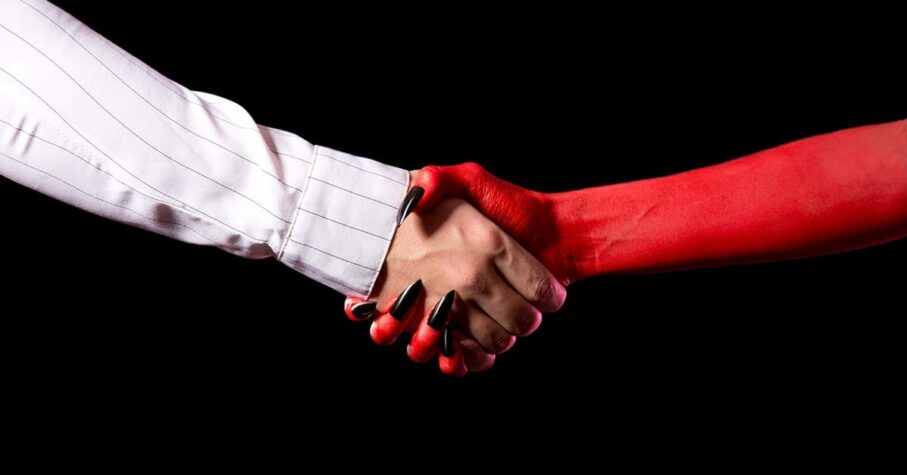
The history of Halloween
A holiday celebration with deep roots in both religion and superstition, Halloween evolved from Samhain, a Celtic festival in which people wore costumes and lit bonfires to scare away any ghosts that might be lurking about on Earth. Pope Gregory III made November 1st All Saints’ Day sometime in the eighth century, probably to bring legitimacy to the Celtic tradition in the eyes of the church. Over time these two celebrations emerged as the secular holiday we know as Halloween.
Traditionally, Halloween blurs the lines between autumn and winter, harvest time and barren growing periods, and life and death. The Celtic belief was that the presence of ghosts on Earth meant prophecies were possible—a true source of solace and power in a time when survival via a good harvest was at nature’s whim. However, the belief also was that the dead could wreak havoc, and that proper sacrifices were necessary to keep trouble at bay.
The Halloween festival in China is called Teng Chieh. Teng Chieh marks the time when the spirits of the ancestors travel back to earth to visit their families, so it is a solemn yet joyous occasion.
In Latin America, Mexico, and Spain, the Halloween celebration is focused on the November 2nd holiday of “El Dia de los Muertos” or the Day of the Dead. This festive, joyful celebration is the time to remember family and friends who have died. The festivities begin on the evening of October 31st, cementing the relationship between Halloween and the Day of the Dead. Around this time in the fall months, the monarch butterflies also return to Mexico. This cyclic return was part of Aztec belief system; the Aztecs believed that the migrating monarchs carried the spirits of the ancestors’ home.
Today, Halloween allows us to grapple with the complexity of death with levity and humour. By dressing in outlandish costumes and playing pranks and games we can make light of one of life’s most frightening circumstances: our own mortality.
With centuries of culture devoted to keeping the lines between life and death sharp, it’s easy to see why we don’t like to mix “death topics” into our everyday lives. Even so, it’s critical to get past this instinctive reaction and address fears about buying life insurance.
Who’s afraid of life insurance?
In short: lots of people. No one wants to contemplate their own mortality, and shopping for life insurance forces you to do just that. Here are the most common fears about life insurance, and the facts that can help you overcome them.
“If I buy life insurance I’m jinxing myself.”
Superstition is a powerful thing. Although saying something out loud has no effect on whether it happens, belief in the power of a jinx does influence the human mindset; it is this psychology of the jinx that causes negative outcomes. In other words, if I say, “I’m probably going to lose my wallet,” out loud and I believe that I have jinxed myself, my negative belief may cause anxiety that in turn has a negative effect on me, making me more likely to lose my wallet or otherwise experience a bad outcome.
Instead of feeling “jinxed” by buying life insurance, use the psychology of belief to make shopping for life insurance a positive experience. Instead of pushing off buying life insurance for another time and worrying about the worst case scenario, use your purchase of life insurance to resolve the issue and banish these negative thoughts for good.
“Life insurance is too expensive.”
Obviously, no one wants to see that a vital product or service is too expensive. However, most people overestimate how much life insurance will cost by three times.* This fear is easily conquered with the right information.
“I just don’t understand the difference between all of these policies and I’m afraid I’ll buy the wrong thing.”
It’s true that there are numerous options out there when it comes to life insurance. The great news is that Canada Protection Plan makes it simple and straightforward to apply. You can call and ask questions without any obligation to buy or contact your advisor and they can also answer your questions.
“I’ll just get turned down anyway.”
It’s much easier to get great life insurance coverage than you think. And with Canada Protection Plan’s No Medical and Simplified Issue Life Insurance, affordable coverage is available to those with even serious health issues or lifestyle factors that may be turned down by other companies.
“I don’t want to put a number on what I’m worth.”
It’s really difficult to talk about both death and life insurance, and to place a dollar value on how much you contribute to the lives of others. There’s no amount of money in the world that can make up for your absence, but that’s not what life insurance does.
Life insurance covers specific, measurable costs like mortgage payments and funeral expenses, and these are much easier to calculate even though there’s no way to attach a price tag to the value the benefits bring to your family should they ever need them.
Conclusion
The reasons behind fears about life insurance may be natural, but failing to care for your family and future based on them isn’t wise. If you’re feeling a little superstitious this Halloween, invest in a great costume or carve some truly terrifying Jack-o-lanterns—but don’t avoid taking care of your life insurance needs. Contact Canada Protection Plan, or one of the 25,000+ Insurance Advisors to help determine the life insurance plan that best suits your needs.
http://www.limra.com/Posts/PR/News_Releases/2015_Insurance_Barometer_Study_Finds_Americans_Continue_to_Overestimate_
Cost_of_Life_Insurance.aspx







